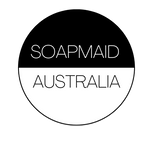Sodium Lactate (Liquid)
Sodium Lactate Liquid | Natural Humectant for Soap Making and Cosmetics
Premium Sodium Lactate 60% Liquid | Soap Hardener & Humectant
Elevate soap making with sodium lactate liquid. Perfect for creating professional cold-process bars, this food-grade humectant delivers hardness and longevity. ▼
Soap Making Applications
Enhance handmade soaps with sodium lactate for soap making Australia. Provides bar hardness, moisture balance and flawless release.
- Bar Hardener: 1–3% of oil weight for rock-solid, long-lasting bars
- Humectant Power: Attracts moisture — mix with shea butter to prevent dry, brittle soap in Aussie climates
- Easy Unmoulding: Add to lye water with coconut oil for clean, detailed designs every time
Other Creative Uses
Explore beyond soap with sodium lactate liquid — versatile for cosmetic crafts.
- Lotion & Cream Stabiliser: 2–5% in emulsions for smoother texture and hydration
- pH Balancer: Milder rinse-off products for sensitive skin
- Bath Bomb Hardener: Strengthens fizzy shapes and extends shelf life
Frequently Asked Questions About Sodium Lactate 60% Liquid ▼
Q: Is sodium lactate liquid safe for soap making in Australia?
A: Yes — our 60% food-grade solution is TGA-compliant and widely used by Australian soap makers for safety and performance.
Q: How does sodium lactate make soap harder and longer-lasting?
A: It binds water and forms a crystalline structure in the bar, increasing density and resistance to mushiness — ideal for humid or high-water exposure.
Q: How do I add it to cold process soap recipes?
A: Dissolve 1–5% of oil weight (e.g. 10–50g per kg oils) into cooled lye water before adding oils. Stir well. Use 60% solution as-is — no dilution needed.
Q: Can it help with detailed moulds and designs?
A: Yes — promotes clean, easy release within 24 hours. Perfect for intricate silicone moulds and layered swirls.
Q: Does it ship across Australia?
A: Yes — delivery Australia wide in plastic jerry cans with tamper proof lid.
Q: What makes your sodium lactate unique?
A: 60% premium liquid, food-grade, no additives — consistent viscosity, pH-neutral, and shelf-stable for 2+ years.
Q: Is it suitable for sensitive skin soaps?
A: Yes — acts as a mild pH buffer, reducing alkalinity. Pair with gentle oils for non-irritating, skin-friendly bars in dry or humid Aussie conditions.
🔍 Resources
SPECIAL ORDERS FOR OVER 10kg – Email info@soapmaid.com for personalised quotes.




